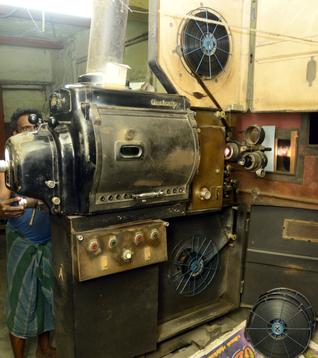
As digital projectors slowly replace traditional, analog ones, film projectionists have become obsolete
There was a time when a film projectionist could make or break the fortune of a cinema theatre.
While the hallowed grounds of projection rooms were where celluloid film rolls whirred into action, bringing to the screens movie magic, the projectionist was the gatekeeper who ensured the show went on without a hitch.
But not anymore.
As digital projectors continue to replace the traditional, analog ones in most theatres across the world, film projectionists have simply been made obsolete.
The few, remaining ones in the city, such as 63-year-old P.S. Mohamad Mohideen Khan who has been projecting images for the past 44 years, feel the death of film projection will diminish the awe and magic of cinema.
Mr. Khan, who now works at the second-tier Srinivasa theatre in West Mambalam, developed an interest in the projected image as a child. He says, “As a young boy, I used to pass light through the film and project the image on to a screen.”
He then went on to work at several theatres, most of which, he says, have been turned into ‘car sheds or garages’.
The phasing-out of film projectors altered the cinema-going experience of the younger generation.
“The big bulky projectors could kindle the curiosity of the audience when they entered a cinema hall. Visiting the so-called projector room was a part of the movie-going experience. It is not there anymore,” says Mr. Khan.
He says it was no easy job: a projectionist had to be alert all the time and it involved hard labour.
“It was a tough job, no doubt about that. One had to monitor how the images were projected on the screen all the time. If the carbon arc burnt too close to the film, it could make the images on the screen dark,” he says.
These days, Mr. Khan operates both digital projectors and the analog, British-made Westrex that uses a Zenon bulb.
What does he think of the future of cinema projection? “Where should it go further? It has already come down to pushing a button to play the film,” he says.
source: http://www.thehindu.com / The Hindu / Home> News> Cities> Chennai / by Udhav Nag / August 13th, 2014